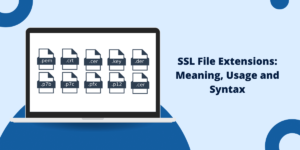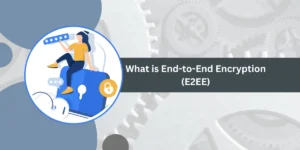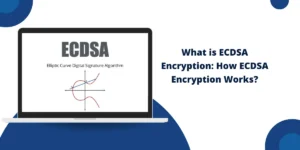Getting Started with SHA-256 Algorithm
SHA-256 is a cryptographic hash algorithm developed by the National Security Agency (NSA) and published by the National Institute of Standards and Technology (NIST) as a U.S. Federal Information Processing Standard in 2001. Due to its high level of security, it is one of the most widely used cryptographic hash functions today.
Key Takeaways
- SHA-256 is a cryptographic hash algorithm that produces a 256-bit (32-byte) hash value.
- It was designed by the NSA and published by NIST as a U.S. FIPS standard for secure hashing.
- SHA-256 relies on fundamental cryptographic principles to ensure that any change to input data drastically alters the hash output.
- It is very computationally intensive to produce an SHA-256 hash, minimizing the potential for brute-force attacks.
- SHA-256 is used extensively in blockchain technology, such as Bitcoin and Ethereum, to secure transactions.
- It also has widespread use in secure communications and digital signatures due to its security properties.
- Comparatively fast computing of hashes makes SHA-256 well suited for integrity checking of large data sets.
What is SHA-256 Cryptographic Hash Function
Cryptographic hash functions like SHA-256 are essential tools in modern information security. They can take an input of any size, like a document or file, and produce a fixed-size hash value that uniquely represents the original data. This hash output is sometimes called a message digest, digital fingerprint, or checksum.
Hash algorithms have a wide range of uses in cryptography and information security applications. Some of the key attributes that enable these use cases are:
- Compression: Ability to take a large input and compress it into a small fixed-size hash output. For SHA-256, the output is 256 bits long, regardless of the input size.
- Efficiency: Computing the hash and comparing hashes can be done relatively quickly on modern hardware.
- One-way Function: It is easy to derive the original input data from just the hash output alone.
- Collision Resistance: It is computationally infeasible to find two different inputs that result in the same hash output.
These properties allow cryptographic hash functions like SHA-256 to be used for integrity checking, message authentication, digital signatures, blockchain proof of work, and more.
Let’s take a closer look at how SHA-256 works and some of its most common applications.
How Does SHA-256 Work?
The NSA designed SHA-256 and follows design principles aimed at ensuring a secure one-way cryptographic hash function.
Some of the key design features include:
- Iterative Cryptographic Compression Function: At the core of SHA-256 is a single-input cryptographic compression function. It takes an input, breaks it into fixed-length 512-bit blocks, and iteratively runs compression and mixing operations on each block.
- Adding Output of Previous Block: The output of processing one 512-bit block is added to the next block input. This produces an avalanche effect as small changes cascade.
- Message Padding: The padding scheme ensures the final block has enough space to hold the exact number of bits required to represent the original length.
- 256-bit Hash Output: The final output after processing all blocks is truncated to 256 bits, regardless of input size.
- Diffusion and Confusion: The compression function combines techniques like bit shifting, boolean operations, and modular addition to obfuscate relationships between Input and output.
These elements work together to ensure SHA-256 behaves like an ideal cryptographic hash. Small changes in the input lead to major, unpredictable changes in the hash output, which prevents determining the original Input from a given hash or finding inputs with the same hashes.
Why is SHA-256 Secure?
There are several important cryptographic principles underlying the security of SHA-256:
- Avalanche Effect: A small change in the input results in a drastic change in the output hash due to cascading iterations.
- Collision Resistance: It is computationally infeasible to find two different messages that hash to the same value.
- One-Way Function: The hash output cannot be inverted to reconstruct the original Input.
- Brute Force Resistant: The 256-bit hash space is too large for brute force to try random inputs to produce a desired hash.
- No Known Weaknesses: Despite significant cryptanalysis over decades, no practical cryptographic attacks have been found.
These properties mean SHA-256 provides a very reliable way to represent input data uniquely. Hashes can be published openly without revealing the original data, and any change to the underlying data can be detected easily.
How is SHA-256 Used?
Some of the most common uses of SHA-256 leveraging its security properties include:
- File Integrity Checking: Generate a SHA-256 hash of a file as a checksum to detect any changes in transit or storage. The slightest change will greatly alter the hash.
- Digital Signatures: Signing a hash instead of the full message saves time and allows authentication of large files. The hash is unique and can’t be forged.
- Password Hashing: Passwords shouldn’t be stored in plain text. SHA-256 provides one-way password hashing with a unique salt to prevent brute-force attacks.
- Blockchain Proof of Work: SHA-256 is used in Bitcoin mining to create valid blocks and in Ethereum’s EthHash mining algorithm. The one-way function prevents cheating.
- Random Number Generation: The SHA-256 hash of an input can provide a good source of entropy for random number generation.
- Data Fingerprinting: Create fixed-length fingerprints of arbitrary data that can be easily compared or stored for duplicate checking.
These and other uses depend on SHA-256 hashes, providing a reliable, secure, one-way representation of the input data.
SHA-256 Algorithm Step-by-Step
The SHA-256 algorithm takes these main steps to compute the hash for any input:
- Padding: Pad the input message so its length is a multiple of 512 bits.
- Break into 512-bit Blocks: Break the padded Input into 512-bit blocks.
- Set Initial Hash Values: Initialize the hash buffer with fixed initialization constants.
- Hash Each Block: Iterate through each 512-bit block of message input.
- Update Hash Buffer: Run compression function that updates the hash buffer.
- Output Final Hash: After the last block, the final buffer is the 256-bit hash.
Now, let’s look at each of these steps in more detail:
Padding the Input
The original input message can be any length. SHA-256 operates on fixed-length 512-bit message blocks, so the first step pads the Input to ensure its total length in bits is a multiple of 512.
Padding involves appending a single 1 bit, then enough 0 bits to align to 512 bits, followed by the 64-bit message length encoded as two 32-bit integers.
This padding scheme ensures that no information about the original length is lost in hashing. The last 64 bits can be used to verify that the correct number of padding bits were removed after hashing.
Breaking Input into 512-bit Blocks
After padding, the length will be a multiple of 512 bits. The padded Input is broken into 512-bit blocks, each of which will be processed.
For example, a 100-byte input after padding may result in two 512-bit blocks of Input to be hashed.
Initializing Hash Buffer
SHA-256 uses an internal state consisting of eight 32-bit hash values denoted a,b,c,d,e,f,g,h. These are initialized to fixed constants defined in the SHA-256 standard before hashing the first block.
h0 = 0x6a09e667
h1 = 0xbb67ae85
h2 = 0x3c6ef372
h3 = 0xa54ff53a
h4 = 0x510e527f
h5 = 0x9b05688c
h6 = 0x1f83d9ab
h7 = 0x5be0cd19
Hash Each 512-bit Block
The initialized hash buffer will now ingest each 512-bit block of the padded Input and update itself iteratively using the SHA-256 compression function.
The compression function takes the 512-bit input block and current hash buffer state to compute a new hash buffer output.
Updating the Hash Buffer
The heart of the SHA-256 algorithm is the compression function that updates the hash buffer for each block. It consists of 64 rounds that perform bit shifting, logical operations, and modular addition.
Some of the high-level steps in each round of the compression function include:
- Break block into 16 x 32-bit words W0: W15
- Compute an expanded message schedule W16: W63
- Initialize working variables a,b,c,d,e,f,g, and h from the hash buffer.
- Perform 64 rounds of hashing that update the working variables a,b,c,d,e,f,g, and h by computing new values for them based on the previous values, expanded message words, and round constants. This diffuses the influence of the Input throughout the hash.
The 64 rounds of the compression function update the working variables a,b,c,d,e,f,g,h as follows in each round:
- Compute intermediate hash value T1 = h + Σ1(e) + Ch(e,f,g) + Kt + Wt
- Compute T2 = Σ0(a) + Maj(a,b,c)
- Update working variables:
- h = g
- g = f
- f = e
- e = d + T1
- d = c
- c = b
- b = a
- a = T1 + T2
- Σ1 and Σ0 are bitwise rotation functions
- Ch is a choose function
- Maj is a majority function
- Kt is a round constant
- Wt is the expanded message word
After all 64 rounds, the final a,b,c,d,e,f,g, and h values are added to the current hash buffer values to produce the updated hash output.
Output the Final Hash
After the final 512-bit message block is processed, the resulting hash buffer is the 256-bit hash output.
This becomes the final digital fingerprint that can uniquely represent the original input message.
The SHA-256 algorithm continues iteratively updating the hash buffer until all blocks are ingested. This chained hashing is what leads to small changes cascading through to change the output drastically.
How to Implement SHA-256: Step-by-Step Guide
There are many programming language implementations of SHA-256 available since it is a widely used standard.
Some examples include:
- Java: The MessageDigest class built into Java runtime provides a SHA-256 implementation.
- Python: Python’s hashlib module contains SHA-256 implementation.
- PHP: PHP provides SHA-256 in the hash() function with ALGORITHM = ‘sha256’.
- C/C++: Libraries like OpenSSL provide SHA-256 implementations for C/C++.
- JavaScript: The subtlecrypto WebCrypto API includes SHA-256 hash functions.
- Go: The crypto/sha256 package implements SHA-256 hashing.
These and many other platform native implementations allow easy integration of SHA-256 hashing into applications. Some also provide hardware acceleration using instructions like AES-NI for even faster hashing.
Examples of SHA-256 Hashing
Let’s look at some examples of computing SHA-256 hashes using a simple Python script:
import hashlib
input_1 = "Hello World"
input_2 = "Hello World!"
hash_1 = hashlib.sha256(input_1.encode('utf-8')).hexdigest()
hash_2 = hashlib.sha256(input_2.encode('utf-8')).hexdigest()
print(hash_1)
print(hash_2)
This prints:
c0535e40be2f53df873ce6e85c4521a70ffdccab1a67e73ef07bb62d93afb10a
e4c5fc5bf8d784f28ca89907d56fbfc2ed71c0b8c58480736ff52550351675e
We see a small change from World to World! Results in dramatically different hashes due to the avalanche effect of SHA-256.
This demonstrates how suitable SHA-256 hashes are for detecting any changes in inputs.
What is SHA-256 Collision Attacks
Collision resistance is a critical security property of a cryptographic hash function. A collision attack aims to find two different inputs that result in the same hash output.
For ideal hashes, collisions require brute forcing through the possible hash space, which is infeasible given sufficiently large output sizes, such as 256-bit for SHA-256.
However, some weaknesses in SHA-256’s compression function have enabled theoretical collision attacks faster than brute force:
- Chosen Prefix Collision Attack: An attack can find two messages with a shared prefix that result in the same hash. This takes about 2^52 computations.
- Semi-free Start Collision Attack: Building on chosen prefix collisions, an attack can generate two arbitrary inputs with the same hash in 2^61 operations.
While these require significant computation, they are still much faster than 2^128 operations that would be needed for a brute-force collision attack against SHA-256.
In practice, collisions have a limited impact on applications like digital signatures, where an attacker needs to choose the prefix freely. However, these theoretical attacks informed the development of SHA-3 to ensure resistance to future advances in cryptanalysis.
What are the Alternatives to SHA-256 Hashing
Some other common cryptographic hash functions include:
- MD5: Produces 128-bit hash. Prone to collisions. It should not be used for security applications.
- SHA-1: Deprecated due to vulnerability to theoretical collision attacks. Being phased out for security uses.
- SHA-3: Latest SHA hash standard. Designed for collision resistance against future attacks.
- Blake2: Fast and cryptographically secure hashes used in blockchain applications.
- SHA-512: SHA variant with 512-bit hashes. More theoretical brute force resistance than SHA-256.
Each function makes different speed vs. security tradeoffs. However, SHA-256 provides a solid combination of speed, security, and usability, making it one of the most common cryptographic hash algorithms used today.
Final Thoughts
Due to its cryptographic security properties, SHA-256 has become a cornerstone of modern information security. Producing reliable and resilient 256-bit hashes is crucial for verifying data integrity, blockchain proof of work, password hashing, and digital signatures.
While theoretical cryptographic attacks exist, they uphold the real-world security and effectiveness of SHA-256 for most applications today. Its proven track record and widespread adoption in systems like Bitcoin ensure that SHA-256 will remain an essential cryptographic hash function for years to come.
Frequently Asked Questions
What is a cryptographic hash function?
A cryptographic hash function takes an input of any size and computes a fixed-size output representation called a hash value, message digest, or checksum. These functions are designed to have properties like one-wayness to prevent deriving the original Input and collision resistance to prevent finding inputs with the same hash.
How secure is SHA-256?
SHA-256 is considered highly secure and collision-resistant for practical purposes against known attacks. It relies on fundamental cryptographic principles to prevent collisions. Some theoretical attacks are faster than brute force, but there are no known shortcuts to finding collisions with arbitrary, unmodified inputs.
Why is SHA-256 256 bits long?
256 bits provide strong collision resistance from brute force attacks using random inputs. The hash is also short enough to become inefficient when computed quickly. The 256-bit length was chosen as a balanced tradeoff between security and performance.
Can SHA-256 be reversed?
No, SHA-256 is intentionally designed as a one-way function. It is computationally infeasible to determine the original input data from the 256-bit hash output alone.
Is SHA-256 used for encryption?
No, SHA-256 is not encryption and does not use a key. It is a one-way cryptographic hash function. Encryption requires decrypting with a key, which is not possible with hashes. Instead, hashes are used to verify data integrity and authenticate content.
Can two different inputs produce the same SHA-256 hash?
It is possible but extremely unlikely to randomly find two inputs with colliding SHA-256 hashes. This property of collision resistance means identical hashes effectively prove the inputs are similar. SHA-256 is designed to prevent intentionally created collisions.
What is SHA-256 used for?
SHA-256 is widely used for applications like digital signatures, password hashing, blockchain mining, file integrity checking, and fingerprinting datasets. The applications leverage properties like irreversibility, collision resistance, and fast computation using the 256-bit secure hashes.

Priya Mervana
 Verified Web Security Experts
Verified Web Security Experts
Priya Mervana is working at SSLInsights.com as a web security expert with over 10 years of experience writing about encryption, SSL certificates, and online privacy. She aims to make complex security topics easily understandable for everyday internet users.



